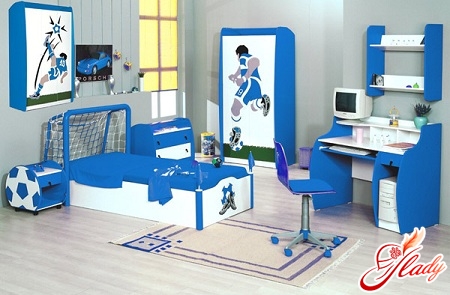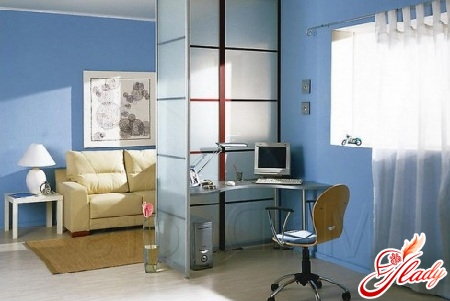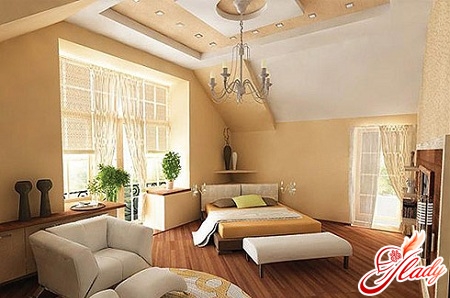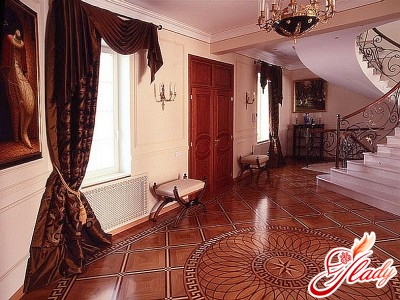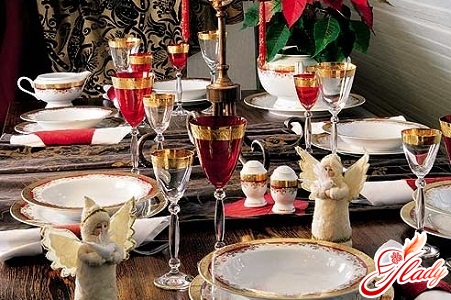 The kitchen in the house is special. And with the fact that almost every hostess is also the main room, no one will argue. The kitchen is one of the most visited rooms in the house. In addition, there is quite an extreme situation: temperature drop, evaporation, splashes of hot water and fat. Yes, and floors in the kitchen are washed more often than in other rooms. This "climate" will shorten the life of any floor covering. Due to this special position of the kitchen in the house, the approach to its design and arrangement must be careful. For example, choosing a floor covering for the kitchen, you need to take into account a lot of nuances:
The kitchen in the house is special. And with the fact that almost every hostess is also the main room, no one will argue. The kitchen is one of the most visited rooms in the house. In addition, there is quite an extreme situation: temperature drop, evaporation, splashes of hot water and fat. Yes, and floors in the kitchen are washed more often than in other rooms. This "climate" will shorten the life of any floor covering. Due to this special position of the kitchen in the house, the approach to its design and arrangement must be careful. For example, choosing a floor covering for the kitchen, you need to take into account a lot of nuances:
- personal preferences,
- financial opportunities,
- stylistic conformity,
- functional requirements.
The choice of floor covering is also influenced by the typeplates (gas or electric), the type of hood, the massiveness of the furniture, the size of the kitchen, its layout and even how you used to walk at home - barefoot or in your home shoes. It is clear that the tastes do not argue, and the question of personal preferences in any case will remain solely your prerogative. But in all other nuances, probably, it is worth investigating more.
Stylistic nuance
If your kitchen is sustained in a certain style,then the floor in it must meet the requirements of this particular style. Historical styles. The style of Provence or Country suggests wooden floors (parquet board) or stone tiles in the kitchen. It is desirable that materials for the kitchen, aged in these styles produce an effect of aging. In the kitchen, decorated in classical style, it is appropriate to use parquet or parquet board, laminate with imitation of precious wood species, as well as marble tile or imitation of any other stone as a flooring. For the kitchen in retro style, small-format tiles are suitable. Modern styles are quite democratic. Here you can use a variety of materials: wood, cork, colored linoleum and glossy tiles. The exception, perhaps, is only the ultramodern high-tech style. To it tiles or linoleum with all shades of gray will approach. When choosing a floor covering for the kitchen, consider its influence on the visual perception of the space of this room. Reduce the room flooring of large items, with a matte surface. Conversely, the fine pattern and elements as well as the glossy surface of the floor visually increase the kitchen space. If the kitchen is spacious enough and combines the working and dining areas, then it is quite acceptable to combine flooring. In the work area it is necessary to use easy-care coatings (linoleum, laminate, stone or ceramic tiles), and in the dining area more whimsical floor coverings (parquet, cork, carpet).
Functional nuance
In addition to the design and stylistic designsrequirements for kitchen floors must have certain properties, due to the special status of this room. Its main function is cooking. Therefore, in the kitchen floors must be:
- water resistant: in the kitchen, the probability of getting water on the floor is great, starting from ordinary spray and ending with an emergency sweat;
- wear-resistant: during their rituals in the kitchen of the hostess they wind up many kilometers along the route "table - slab - sink", so durability is also an important quality of kitchen flooring;
- shockproof: utensils and other kitchen utensils have the property of falling out even from the most dexterous hands, and pots, frying pans and chopsticks are quite heavy;
- hygienic: where food is prepared, dirt should be easily (and quickly) removed, or even better - do not stick at all.
Existing floor to datecoatings certainly have these properties, but to varying degrees and not all at once. Let's look at the most famous and familiar materials for the kitchen floor. 
Material nuance
The natural tree is reliable and durable. The most common wooden flooring is parquet and parquet board. For the kitchen it is better to choose hardwood parquet: it is more wear-resistant and has a high hardness. Parquet for kitchen (parquet board) should be waterproof and treated with a protective compound. But even this parquet should be protected from water. In addition, fallen objects can leave marks on it (scratches, dents). True, these disadvantages of the wooden floor compensate for the possibility of accessible ways of its restoration and renovation. Another kind of wooden cover is cork. Its advantages: environmental friendliness, immunity to moisture, durability, antistatic, high price. Stone and pottery in the form of floor slabs - more suitable material for the floor in the kitchen. Such a tile is absolutely not afraid of moisture, chemical (detergents) and thermal (hot objects) effects. It does not deform and it is easy to wash. Of the disadvantages of such a coating is worth noting its coldness and slipperiness. In addition, a glassware that falls on such a floor can easily be beaten, and ceramic tiles can crack themselves. Laminate - an artificial floor covering, imitating wood, stone and ceramics. Laminate can be called a suitable floor covering in the kitchen only if it is resistant to moisture and abrasion. Its advantages: low price, heat resistance, neat appearance, nice texture. Cons: electrostatic, fear of excessive moisture, low impact resistance and the inability to restore. Another synthetic material - linoleum. This is perhaps the most famous and most democratic kind of floor covering for the kitchen. It perfectly meets all the necessary requirements: moisture resistance, resistance to abrasion, impact resistance. In addition, linoleum is very easy to wash, it is warm and varied in color and texture. The main drawback of linoleum - susceptibility to hot: hot objects and even splashes of oil can leave traces on the linoleum. A kind of linoleum - PVC tiles. It can simulate ceramic or stone tiles, parquet or laminate. Its added plus - ease of installation and the possibility of replacing damaged copies. Liquid linoleum is a polymeric bulk floor. Such a floor looks like a linoleum, and feels like a tile to the touch. The floor is very unpretentious. It is not afraid of mechanical damage, has a smooth and seamless surface, maybe with different patterns and decorative inserts. The main disadvantage of such sex is a very difficult substitution. Carpet is probably the most inappropriate solution for the kitchen. However, if you still want to have a carpet in your kitchen, you can pick up a carpet with increased moisture resistance and immunity to pollution.
Nuance with heating
To arrange heated floors or not - a questionhighly controversial. If, in general, your apartment (or the kitchen) is quite cold, then, of course, you can install a warm floor. Heating can also be useful if you decide to put a stone or ceramic tile on the floor. Fans of walking around the house barefoot and parents of young children will not find the warm floor in the kitchen to be a luxury. But blindly follow the general fashion still should not be. With frequent use of the stove (especially the oven), if there is a good radiator and double-glazed windows in the floor heating in the kitchen, there should not be. Otherwise, the kitchen threatens to turn into a real gas chamber. In any case, the choice is yours. Do not forget only about the additional financial costs when installing a warm floor.
Financial nuance
The question of value is also important when choosingfloor coverings for the kitchen. The most expensive coatings of natural materials: parquet, cork, stone tile, natural linoleum. Next (in decreasing order) follows laminate and ceramics, and the lowest cost of synthetic linoleum. So in a row of expensive and more affordable floor coverings, you can choose exactly what will fully meet the necessary requirements and your tastes. Do not take precocious decisions. Take advantage of everyday experience of your relatives and acquaintances. Consult with experts, go shopping, compare prices. Even the Internet can tell you what should be the floors in the kitchen: photos, forums, online stores, user reviews will help you make the right decision. Well, in general, in the kitchen floors must be strong, moisture resistant, safe and, of course, beautiful. Take into account all these nuances and boldly implement your plans in the arrangement of the kitchen! We advise you to read:




